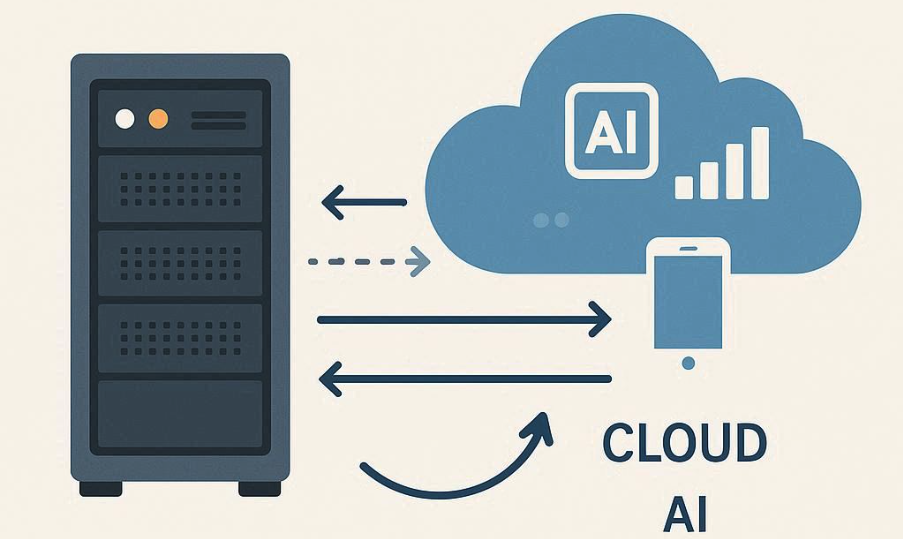Mainframes + Cloud : Hybrid IT | 매거진에 참여하세요
Mainframes + Cloud : Hybrid IT
#Mainframe #Finance #Telecom #Stability #Cloud #Hybrid #Server #Business
Legacy Meets Innovation
For years, “cloud migration” has been the dominant theme in enterprise IT.
Yet mainframes remain a core part of critical infrastructure.
In industries like finance, telecommunications, and government, mainframes still deliver unmatched stability, security, and large-scale transaction processing.
But the reality of 2025 is different:
AI models, big data analytics, machine learning platforms, and large language models (LLMs) are mostly available only through global cloud providers. To stay competitive, enterprises cannot ignore the cloud.
The only viable path? Hybrid IT where enterprises safeguard reliability with mainframes while accelerating innovation through cloud technologies.
IT Perspective – Hybrid IT Architecture
1. Mainframe Strengths
Stability → 24/7 operations, decades of proven resilience.
Massive transaction processing → Ideal for finance, telecom, logistics.
Security & compliance → Easier regulation adherence via on-premises data centers.
2. Cloud Strengths
Agility → Rapid deployment and scaling for volatile markets.
Cost efficiency → Pay-as-you-go models reduce upfront investment.
Innovation access → AI, big data, IoT, and LLMs are readily available.
3. Hybrid IT Strategy
Mainframe → Core data + mission-critical operations.
Cloud → New services, customer-facing apps, advanced analytics.
Unified management platforms → Bridge both worlds for maximum operational efficiency.

Business Perspective – Balancing Stability & Innovation
1. Finance
Global banks like JP Morgan and Goldman Sachs run mainframe-based transaction systems while rolling out cloud-driven digital services.
→ Achieving both transaction stability and service innovation.
2. Telecommunications
Legacy billing and CRM systems remain on mainframes.
But customer-facing apps, AI-powered chatbots, and personalization engines run in the cloud.
→ Improving agility and customer experience.
3. Global Enterprise Strategy
Hybrid IT helps organizations:
- Preserve critical systems
- Embrace new market opportunities
- Enhance business agility without sacrificing reliability
Design Perspective – Enterprise Service UX
1. Consistency Challenge
Hybrid environments are complex in the backend.
Users, however, demand a single, seamless experience, not one divided between mainframe and cloud.
2. Data-Driven UX
Cloud → Real-time behavioral data collection.
Mainframe → Historical + secure transaction data.
When combined, enterprises can deliver highly personalized user experiences.
3. Case Studies
JP Morgan
→ Hybrid IT allows both secure transactions and innovative mobile services, combining mainframe stability with AI cloud analytics.
IBM
→ Provides hybrid consulting services integrating client mainframes with AI/IoT-powered cloud solutions.
Telecom Providers
→ Keep billing on mainframes, but migrate mobile apps and AI customer support to the cloud for better UX.
The UX Advantage in Hybrid IT
IT lens → Optimal operations by merging mainframe reliability with cloud agility.
Business lens → Protect mission-critical systems while launching new digital services.
Design lens → Deliver consistent, personalized, and user-centric experiences.
Future enterprise competitiveness will not be defined by technology choice alone.
It will hinge on the ability to balance stability, innovation, and experience design, and that’s where Hybrid IT becomes a decisive strategy.






